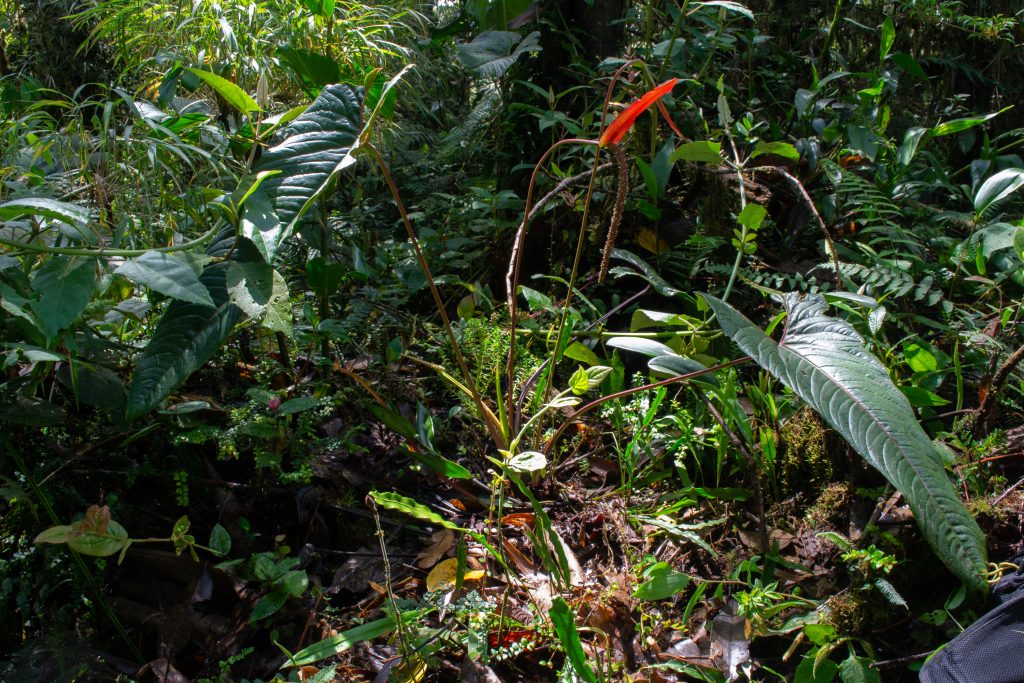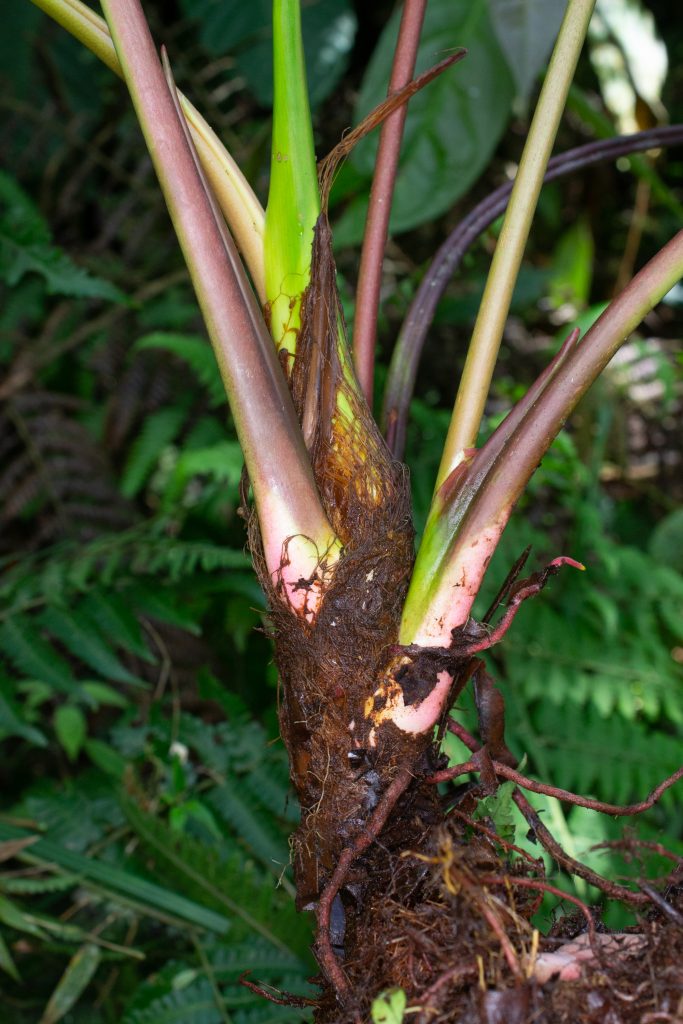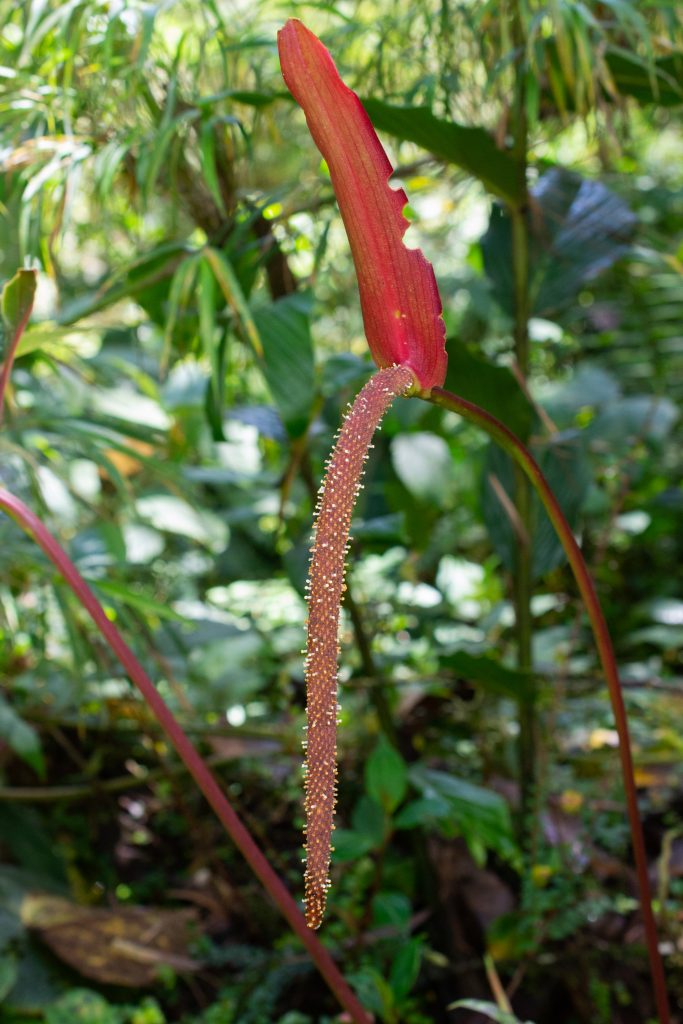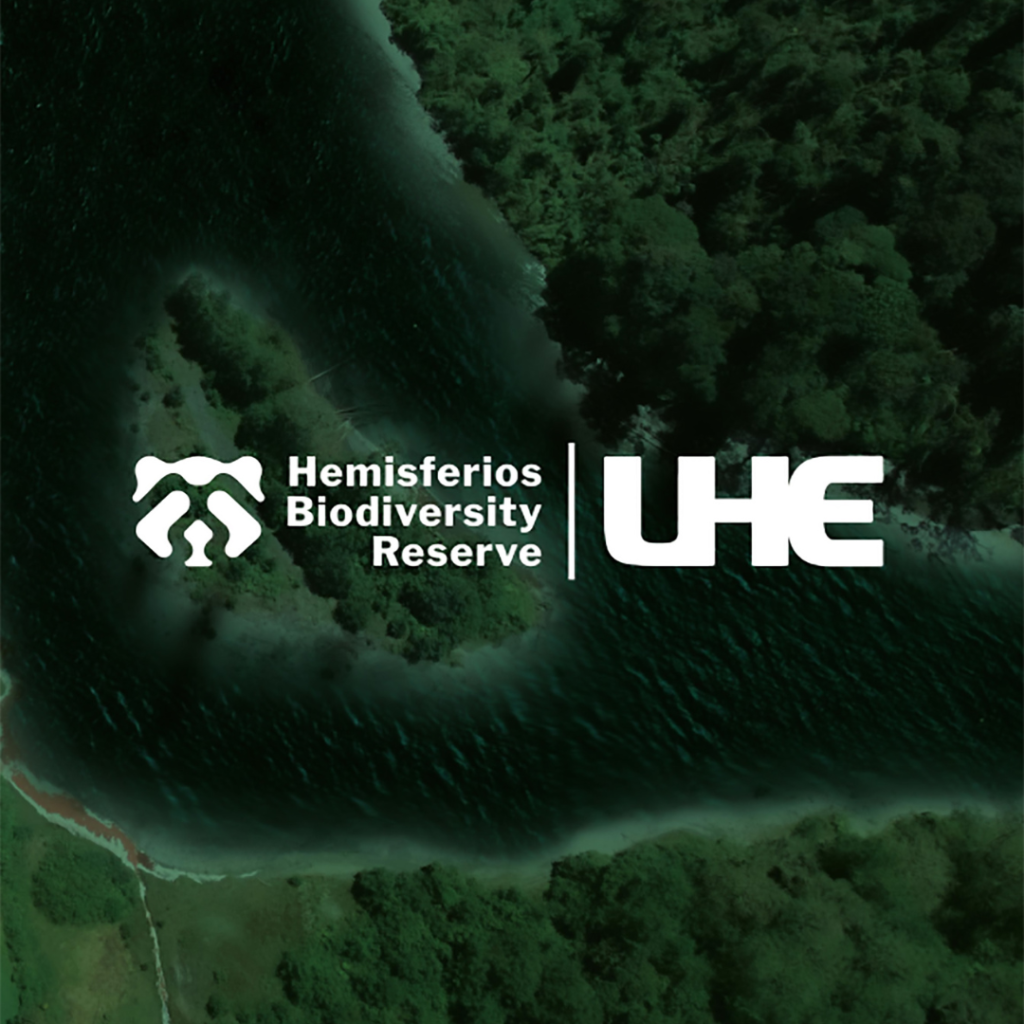The Hemisferios Biodiversity Reserve is a 2,168 hectare montane rainforest located in the parishes of Cotundo and Cosanga in the Napo province. In ecosystem terms, the reserve is home to a diversity of flora and fauna species, produces water, is crossed by several rivers and waterfalls, and also serves as a buffer zone for Antisana National Park. Among the main flora species are a diversity of bromeliads, anthuriums, ferns and orchids. Also species such as the spectacled bear, ocelot tapir, tapir, swift, Andean guan, among others.
In 2022, the Hemisferios University, together with the Botanical Foundation of the Andes and the Botanical Garden of Quito, began a process of exploratory survey of information on the representative flora existing in the reserve. This work, developed under an inter-institutional agreement, was aimed at strengthening the substantive functions of research and outreach to society through projects approved in institutional calls for proposals that were implemented by the International Center for Research on Environment and Territory (CIIAT). The research process identified 111 species of flora, of which 23 are endemic, 11 are vulnerable, one is endangered(Begonia hitchcockii), and one is critically endangered(Piper baezanum).
As part of the research work developed, a new species of the Araceae family was discovered and described in March 2024: Anthurium antisanense . This is a species endemic to Ecuador, so far only recorded in the Hemisferios Biodiversity Reserve. It was described as follows:
The species is a member of section Belolonchium and is characterized by its terrestrial habit, short internodes, persistent fibrous cataphylls, long subterete petioles, narrowly triangular-sagittate leaves, 7-8 basal veins with the first pair free to the base, the posterior rib long almost straight and approximately ¾ naked, as well as by the long, pedunculate inflorescence, linear-lanceolate reddish spathe that stands erect, and the long, slender, pendulous purple-violet spadix with long, exposed whitish stamens (Zambrano and Croat, 2024).
Anthuriums are characterized by inflorescences, composed of a spathe and a spadix, which attract a variety of pollinating insects, including wasps, beetles and flies. Some spadixes give off strong, sweet fragrances to attract them.
As a curious fact, Ecuadorian territory is home to more than 400 species of Anthurium, the most representative genus of the Araceae family in the country; however, it is estimated that more than half of its species have yet to be discovered and described.
Thus, the development of research programs of this nature allows us not only to identify new species, to value those already discovered, but also to generate information that allows us to articulate conservation strategies to stop the fragmentation of the Andean montane ecosystem, and to confront pressures and threats to biodiverse ecosystems such as the one in the reserve.
Scientific knowledge is a key tool for conservation!









